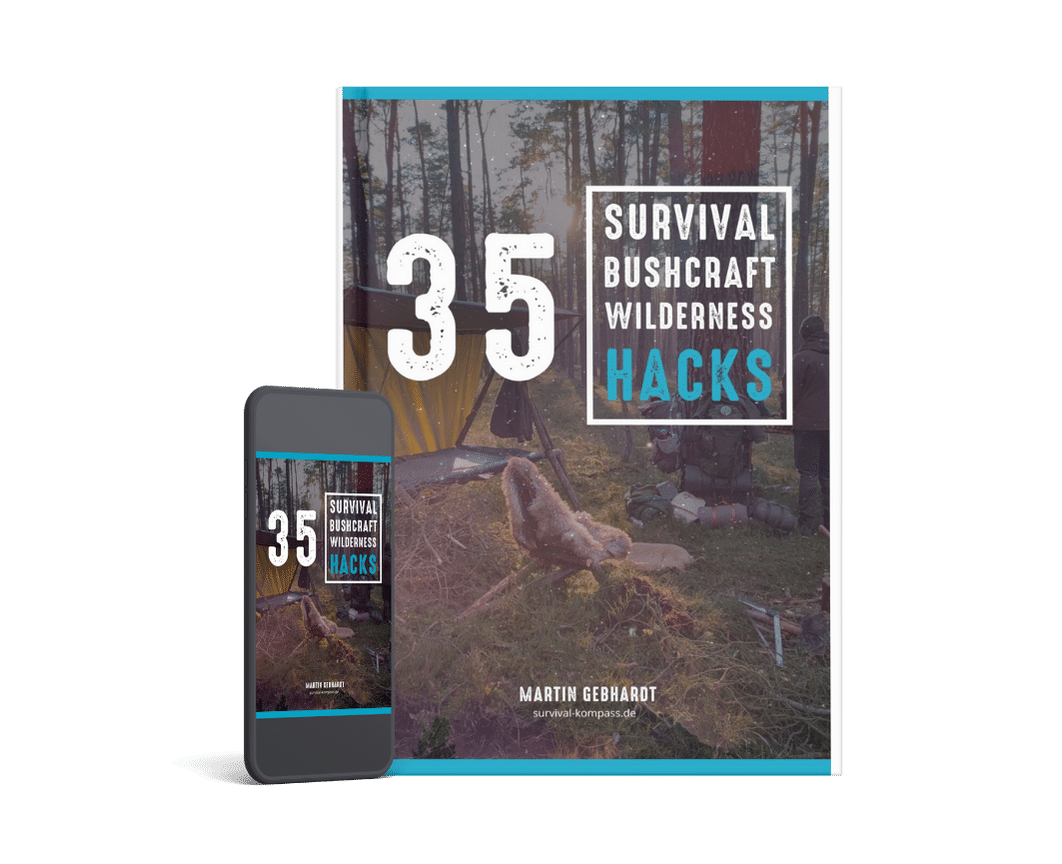
Survival with plastic bottles: 30+ ingenious survival hacks for castaways
👉 The key facts from this guide
- Plastic bottles are real multi-talents in survival and can help you collect, filter, or even disinfect clean water using sunlight.
- You can build clever traps for fish or insects from bottles, create useful collecting containers, or use them as floats for fishing solutions.
- With a little imagination, practical tools like shovels, funnels, cups, or even an improvised fire lens can be made from bottles.
- Bottles also bring advantages to your camp: as insulation, seating, or even as a small pillow for more comfort.
- When it comes to attracting attention, bottles serve as signal mirrors, buoys, or even as protective housings for a homemade compass.
- Whether as an emergency shoe, goggles, or joint splint – with know-how and creativity, PET bottles often make the difference between chaos and control.
Stranded!
Alone on a deserted island, surrounded only by sand, sea, and... a pile of washed-up plastic bottles? What looks like useless trash could be your key to survival!
You won't believe what can be made from simple PET bottles when it matters. These unassuming containers are true all-rounders in an emergency situation.
Imagine how you can collect water, purify it, build tools, catch food, and even send signals with their help. Your knowledge of the versatile use of plastic bottles can make the difference between hopelessness and survival.
Read on and discover over 30 brilliant ways how washed-up plastic bottles can save your life!
Secure Water Supply
The most important priority in survival is often clean drinking water. Plastic bottles are extremely useful for this:
- Water container: The most obvious benefit. Use intact, sealed bottles to collect and safely transport fresh water (rain, spring).
- Rainwater collector: Cut bottles open and strategically place the bottoms or cut halves to catch valuable rainwater.
- Dew collector: Tie cut bottle halves around leafy (non-toxic!) branches at night. The morning dew condenses and collects in the bottle.
- Water filter housing: Cut off the bottom, turn the bottle upside down, and use it as a container for filter layers (fabric, charcoal, sand, gravel). The cap with a small hole serves as an outlet. A detailed guide on how to build a water filter yourself can be found here.
- SODIS (Solar Water Disinfection): Fill a clear, clean PET bottle with water (as clear as possible, possibly pre-filtered), seal it, and lay it flat in the sun for at least 6 hours (in full sun) or 2 days (in cloudy weather). UV radiation kills many pathogens. More information on water treatment can be found here.
- Boiling (emergency solution): Carefully place a full, open bottle near the fire (not directly in the flames!). The water can be heated/boiled, but the bottle often melts in the process. Only in extreme emergencies when no other option is available (e.g., no metal or glass container available). Does it really work? Read more here.
- Distillation apparatus (mini): A bottle can be part of a simple solar distillation to remove salt from water and make it drinkable (more complex setup with foil or additional containers needed).
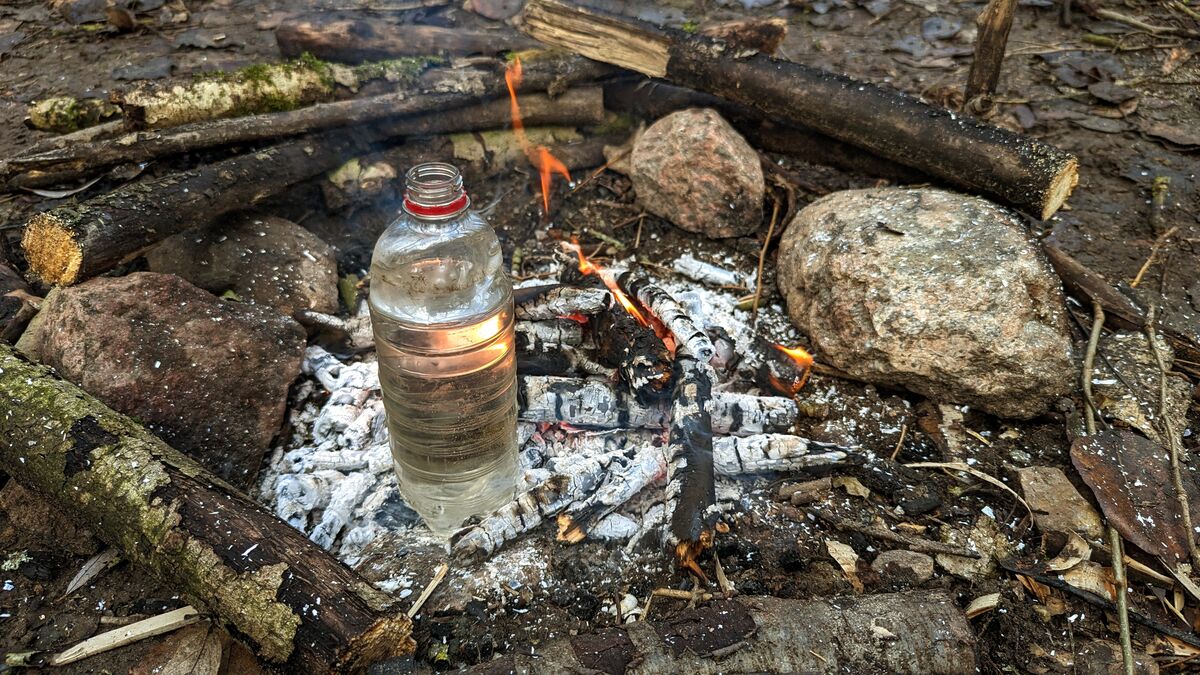
Obtain Food
Plastic bottles can also help in the search for food:
- Fish/Small Animal Trap: Cut off the top part of the bottle, invert it into the bottom part, and secure it (e.g., with string through drilled holes). Place the bait inside and position it in shallow water or on land. Small fish, crabs, or rodents swim/crawl in but have difficulty getting out. This is similar to simple survival fishing techniques.
- Insect Trap: Similar to the fish trap, possibly with sweet bait for flying insects or placed on the ground for crawling creatures. Insects can be an important source of protein; you can find more about eating insects in survival here.
- Collecting Container: Use cut bottles or bottle bottoms for easy and safe collection of berries, shells, edible plants, eggs, etc.
- Fishing Float/Bobber: A small, tightly sealed bottle or part of it can serve as a visible float for an improvised fishing line.
- Net Needle (Shuttle): A simple needle for knotting or repairing nets can be cut from a sturdy piece of plastic (e.g., sidewall of a thicker bottle).
- Mini Greenhouse: Cut off the bottom and invert the bottle over young plant seedlings to protect them from wind, drying out, and small predators (more for long-term scenarios).

Manufacturing Tools and Aids
Plastic bottles are a versatile raw material:
- Shovel/Digging Tool: Cut a bottle diagonally to create a handy shovel. Ideal for digging in sand, loose soil, or for moving embers.
- Funnel: The cut-off top part of a bottle (the cone with the thread) makes a useful funnel for transferring liquids or fine materials.
- Cutting Tool (Emergency Solution): A sharp edge on a broken or precisely cut piece of hard plastic can be used to cut soft materials (plant fibers, soft wood). Caution is advised!
- Cup/Ladle: The cut-off bottom of a bottle serves as a simple drinking cup or as a ladle for water or loose materials.
- Waterproof Container: Smaller bottles with an intact cap are excellent for storing tinder, small tools, herbs, or other delicate items dry and safe.
- Rope/String (Bottle Cordage): With a sharp tool (knife, stone), a bottle can be spirally cut into a long, surprisingly tear-resistant plastic strip. These strips can be used directly as string or braided into stronger ropes. Learn more about items for making ropes here.
- Fire Lens (Emergency Solution): A clear, ideally very round bottle, perfectly filled with clear water, can act like a magnifying glass in strong, direct sunlight and ignite fine, dark tinder. This requires patience, practice, and optimal conditions, but it is one of the methods for making fire without a lighter.
- Windbreak for Fire: Larger, cut bottle walls can help protect a small ignition flame or embers from disturbing wind.
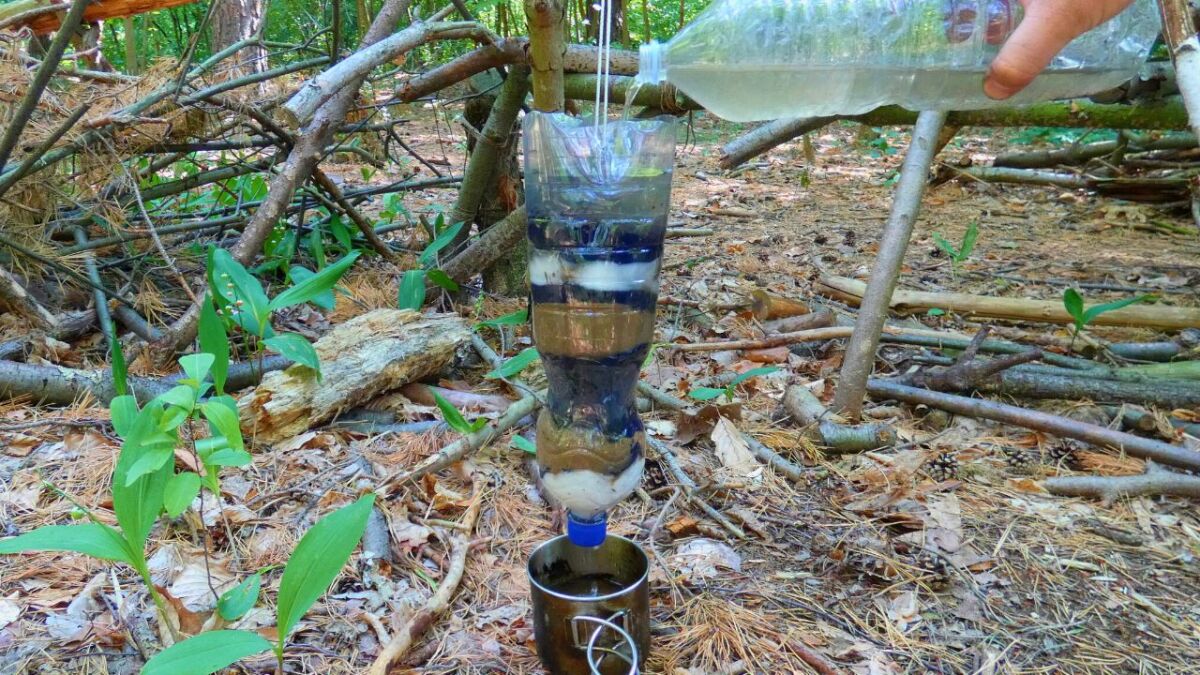
Accommodation and Comfort
Even if they don't replace bricks, bottles can contribute:
- Insulation (conditional): Empty, tightly sealed bottles contain air and therefore provide some insulation against cold and heat. They could serve in greater numbers to fill gaps in an emergency shelter (e.g., leaf hut) or form an insulating sleeping pad.
- Waterproof pad (small): Several cut open and flattened bottles, arranged overlapping and connected, can create a small water-repellent seat or knee pad.
- Pillow: An empty bottle, filled only slightly with air or soft material (leaves, grass) and sealed, can serve as an improvised pillow.
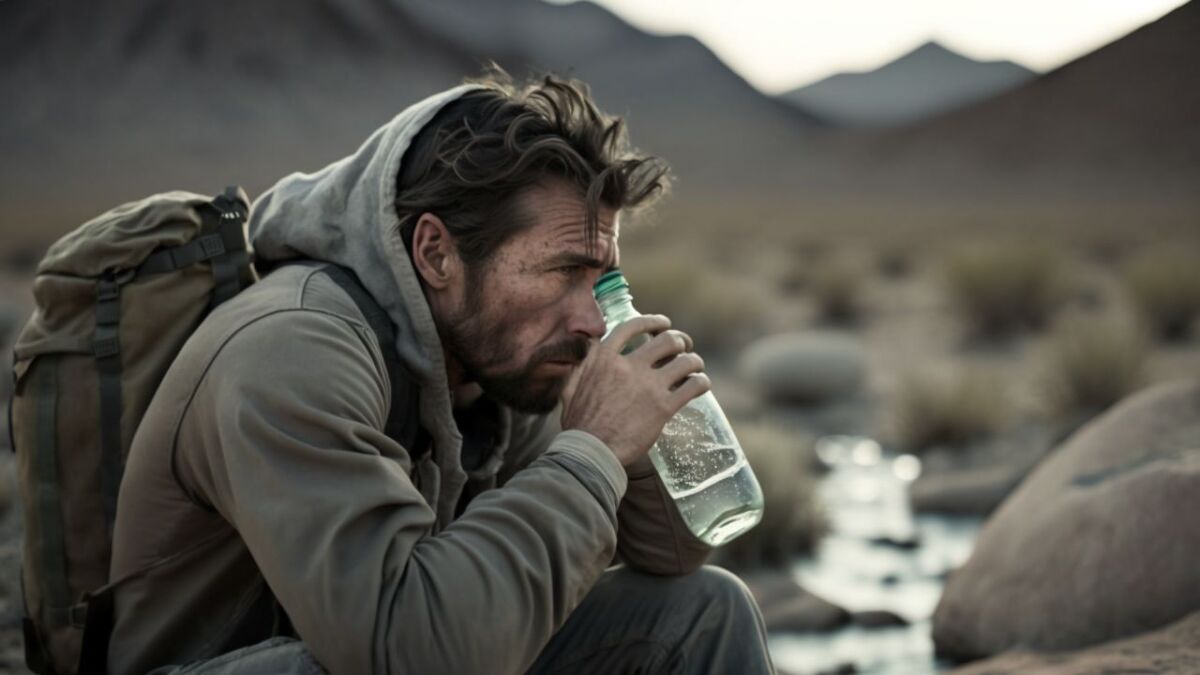
Signaling and Orientation
In an emergency situation, it is important to make yourself known:
- Signal mirror (conditional): The smooth, often shiny bottom of some bottles (especially the star-shaped bottom of many PET bottles) can reflect sunlight to attract attention (e.g., from airplanes or ships). It becomes more effective if shiny material (emergency blanket, aluminum foil) is placed inside.
- Buoy/Marker: A well-sealed, empty or partially filled bottle can serve as a marker in the water (e.g., for a fish trap, a safe swimming spot, or a shallow area).
- Message buoy: The classic message in a bottle. Throw a message in a well-sealed, sturdy bottle into the sea – the chances of success are low, but it is an option when other means of communication are lacking.
- Compass housing: Protect an improvised compass needle (magnetized needle on a floating leaf in a small bowl of water) in a cut-off bottle bottom from wind and bumps.
- Signal whistle (difficult): With very precise cuts and some skill, it may be possible to create a simple, loud whistle from a bottle neck or cap.
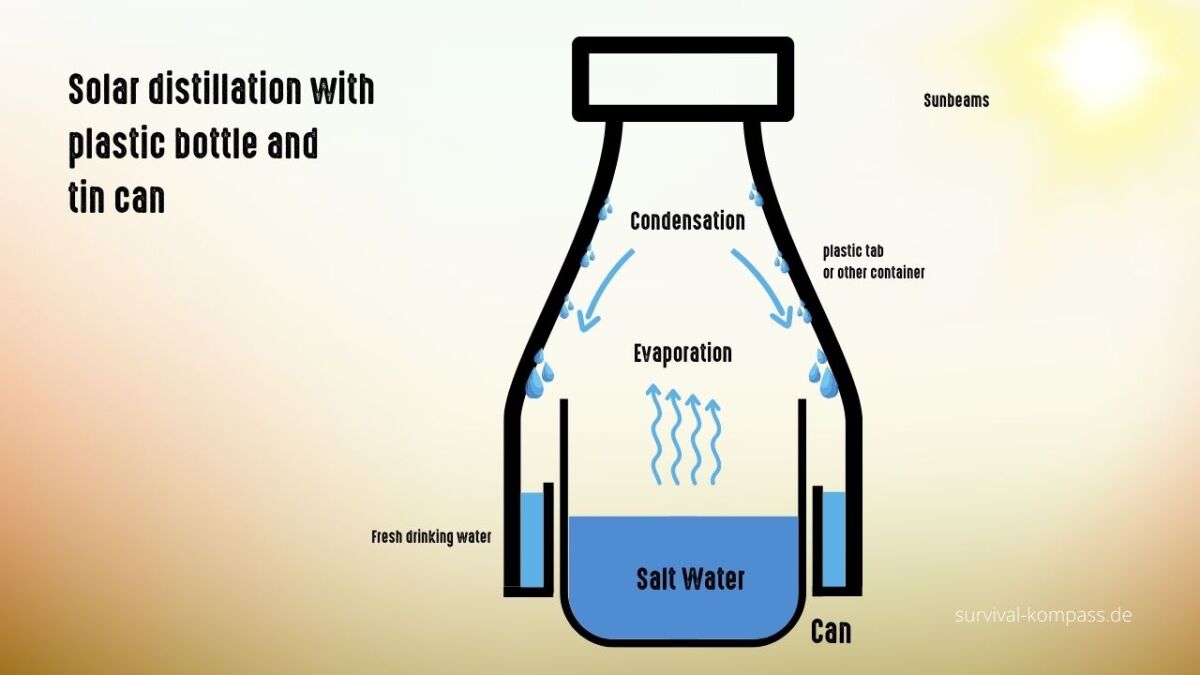
Miscellaneous
More creative applications:
- Safety glasses/eye protection: From the clear, cylindrical middle part of a larger bottle, a simple, curved eye protection against sand, dust, sparks, or splashes can be cut out. Don't forget attachment holes for a cord.
- Footwear (makeshift solution): Very large, sturdy bottles (e.g., 5-liter canisters) can be cut and shaped to provide temporary protection for the feet against sharp surfaces (coral, rocks). Comfort is minimal, but the protection can be crucial.
- Splint (makeshift solution): The sturdy, curved parts of a larger PET bottle can be used for temporary stabilization and splinting in case of injuries (e.g., wrist sprain), ideally with padding underneath.
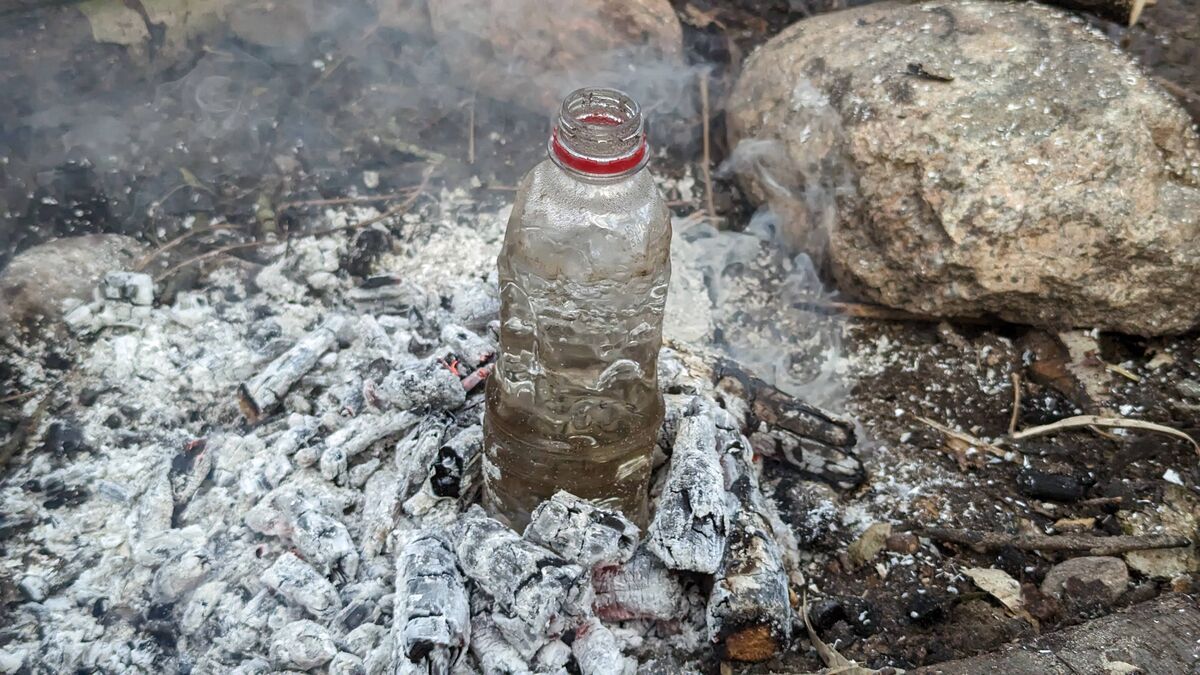
Conclusion: Plastic bottles are much more than just waste
With creativity, knowledge, and a little craftsmanship, plastic bottles become essential tools for water, food, shelter, and signaling.
The ability to recognize and utilize existing resources – even seemingly worthless ones – is one of the most important skills in survival.
Always remember: Improvisation is everything!


Author of the guide
Martin Gebhardt
Hey, I'm Martin. On my blog, you will learn the basics and numerous details about living in the wild. I think survival, bushcraft and the good life in nature are the keys to happiness. Find me here on Instagram or on YouTube. You can find more about my mission on the About Me page.
Was this guide helpful?
16 people found this guide helpful.
5.00 out of 5 points (16 Ratings)
Comments (0)
This post may contain affiliate links. So if you click on the links and make a purchase, I will receive a small commission at no additional cost to you. Click here, to learn more about it.


